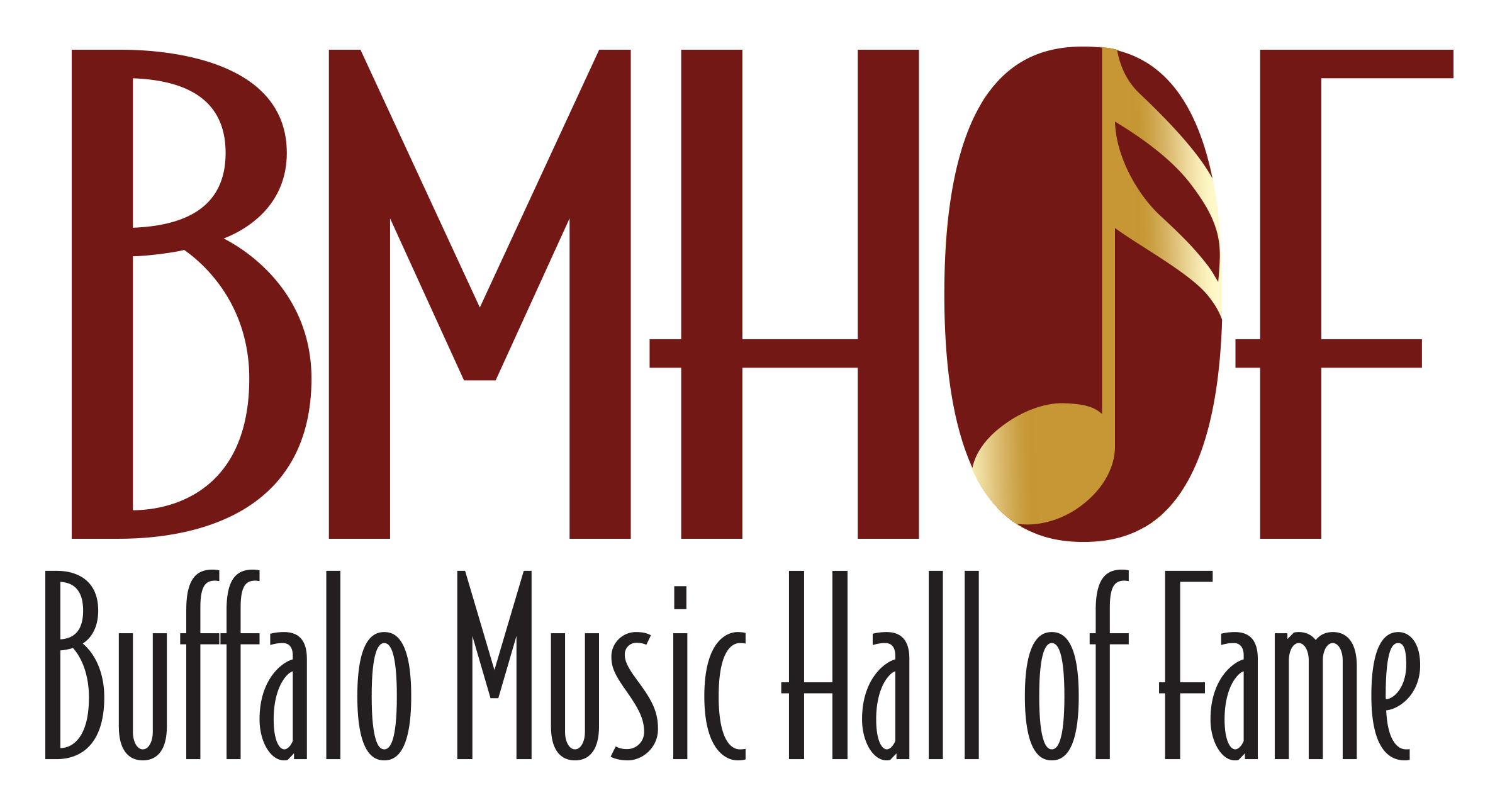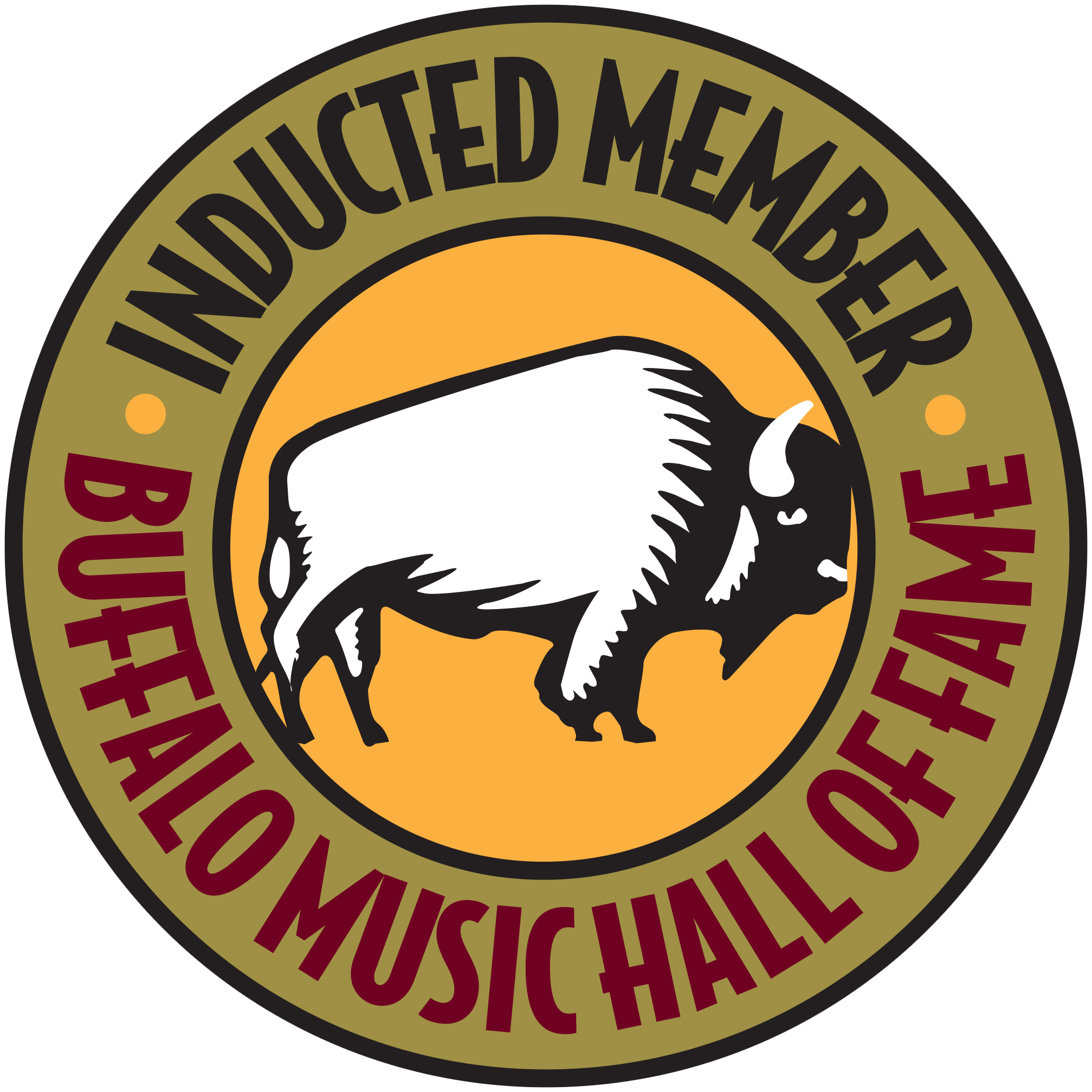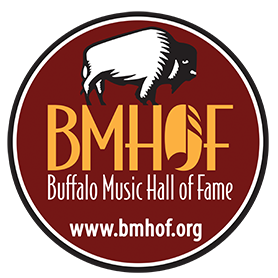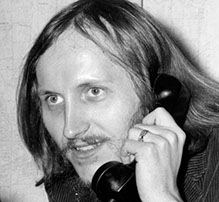





DALE ANDERSON - BMHOF CLASS OF 2003

When he arrived at what was then The Buffalo Evening News on the morning after the Glen Park Casino burned down in September 1968, Dale Anderson didn’t expect to be there long. He was playing a Hofner Beatle bass in a band, the straightest-looking member of a pot-smoking hippie quintet called Lavender Hill, and he moved to Buffalo to join them from his native Dunkirk-Fredonia, where he and a high school friend gave rise to the group three years earlier playing folk songs in a coffeehouse. It only a matter of time before they were rich and famous.
That dream was still in effect in August 1969, when a senior editor asked Dale on the Friday morning of the Woodstock festival to go there and report on it. He famously turned it down. Lavender Hill had a gig that weekend. Shell’s Lounge on Broadway. Five sets a night Friday and Saturday. $85 a night. He couldn’t leave the band in the lurch. Besides, he wanted to play Woodstock, not cover it.
By July 1970 the dream had faded. Lavender Hill was still a second-tier bar band, no longer writing new songs, its fortunes often riding on a last-minute call from the booking agent. One Friday night, with no prospects by 7 p.m., Dale and his then-wife Laura decided to go to a movie. While they were out, one of those calls came. His bandmates were majorly bummed. He was out.
Meanwhile, at The News, he had new assignment. Since April, he was writing full-page feature stories about local musicians and music-related people for a section called Pause in the back of the Saturday TV Topics magazine. During the next several years, he interviewed virtually every significant player and personality in the Buffalo area, gradually becoming the paper’s primary pop and rock concert and record reviewer. Beginning in 2020, as a pandemic project, he has been transcribing these articles from microfilm and posting them online on his Facebook and Blogspot pages.
When The News started its weekend entertainment magazine Gusto in 1977, Dale became a full-time critic and feature writer. He produced cover stories on a wide variety of topics, from architectural history to skateboarding, interviewed touring musicians (beginning with Jerry Garcia backstage at the Aud), wrote about nightspots and continued reviewing records and concerts. His nightlife explorations became the basis for a self-published book in 1985, “A Beerdrinker’s Guide to Buffalo Bars,” compiled with his fellow bon vivant Bob Riley.
He also got to be on the radio. First, he was Dempster Bucks, a mean-hearted concert reviewer featured on the WGRQ-FM (97 Rock) morning show with Jim Santella and Mary Van Vorst. For more than a year, the alias got him around a Buffalo News prohibition on unapproved outside activities. Then Jim Baker, the TV critic for the rival newspaper, the Courier-Express, outed him in a column not long after Gusto started. He was suspended for a week.
Before long, this time with permission, he was back on the airwaves with Dale Anderson’s Sunday Brunch, five live hours of freeform music and requests on WZIR-FM, 98.5 (Wizard). He recorded the show’s topical theme song, “Energy,” at Tom Calandra’s BCMK Studio and released it as a single.
After a format shakeup, Wizard mastermind Bob Allen brought freeform rock to another station, WUWU-FM, 107.7, and Dale had another weekend show for a couple years, this one a pre-taped two-hour preview of upcoming concerts and new releases. He later did a half-hour version of that show for 10 years on WBFO-FM, 88.7.
He long believed that Buffalo area musicians had just as much talent as major national artists and thought more of them should be breaking through. Then in 1987 he heard Ani DiFranco perform one of her early original songs at a talent contest he helped judge in Niagara Falls. It knocked him out. One listen to her first tape when he interviewed her for The News and he was convinced that she was the best singer-songwriter to come along since Bob Dylan.
Determined to keep her from getting chewed up and robbed by the music business, he became her manager. First four years. First five albums. He booked her appearances, then took her to what’s now Fleming Artists, a leading folk music agency. He produced her recordings, did radio promotion and publicity, oversaw sales, serviced stores and independent distributors and, in those days before social media, encouraged her grassroots, word-of-mouth fans via a mailing list that grew to more than 2,000.
When efforts to do something meaningful with major record companies proved fruitless, he started her independent label, Righteous Records, later Righteous Babe. He engineered her breakthrough appearance at the 1991 Mariposa Folk Festival in Toronto, thanks to an old acquaintance with then-artistic director Richard Flohil. That led to invitations to folk festivals across Canada in 1992 and a showcase that year at South by Southwest in Austin, Texas.
Differences between them arose during festival season in 1993 and Dale and Ani parted ways in early 1994. He then started a music-related company, Hot Wings Entertainment, which produced several CDs, beginning in 1994 with “No Illusions,” a collection of songs by 15 Buffalo area women singer-songwriters. One of them was Alison Pipitone, with whom he released three albums.
For the local Media Play stores, he and Audio Magic studio’s Robby Konikoff produced a pair of compilations of holiday songs by local artists – “That Christmas CD” and “That Other Christmas CD.” When the Sabres reached the Stanley Cup playoffs in 1999, he and Ken Kaufman needed only a week to bring out an updated version of Tom Calandra’s “We’re Gonna Win That Cup,” with vocalist Maria Sebastian.
He also provided management and promotional assistance for a variety of local and out-of-town artists. He arranged showcases for several Buffalo performers at the North by Northwest music conference in Toronto in the late 1990s. Pete Seeger dropped in on his showcase of Western New York artists at the Folk Alliance conference in Toronto in 1997. He kept attending the SXSW, NXNE and Folk Alliance conferences through 2006.
When managing editors decided his work with Ani DiFranco was a conflict of interest, Dale chose to keep working with her and stopped writing about music for The News in January 1992. Back in the newsroom now for 30-plus years, he has been a reporter, rewrite man and night city editor, specializing in feature obituaries. But he still has his ears open to new music. He makes annual compilation CDs from each year’s releases for friends and continues to post occasional reviews on Facebook and Blogspot.